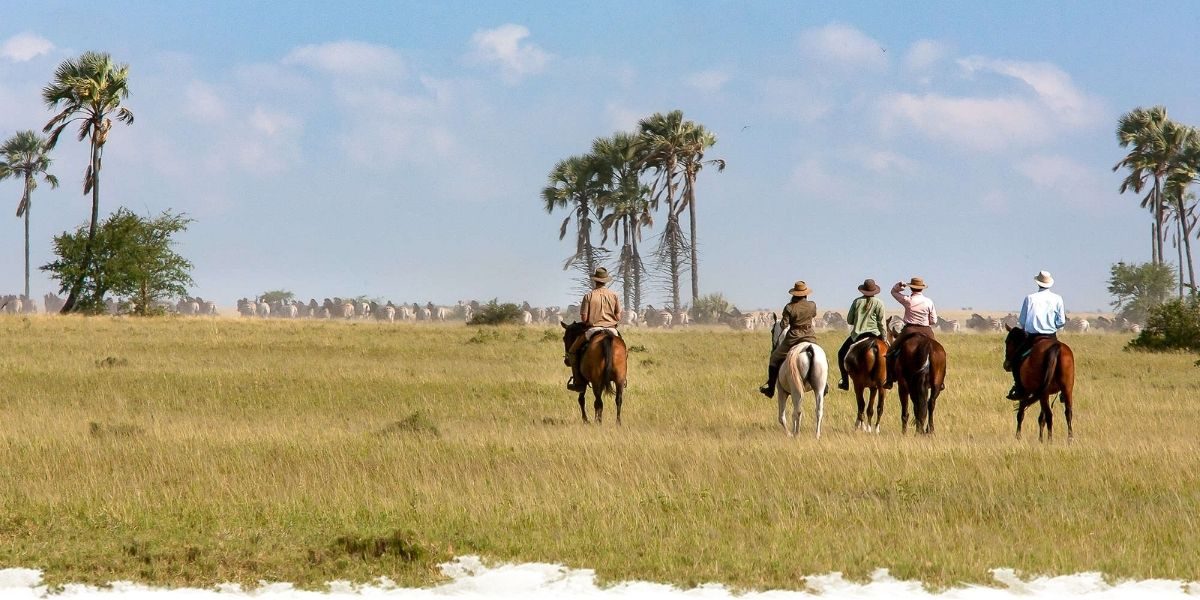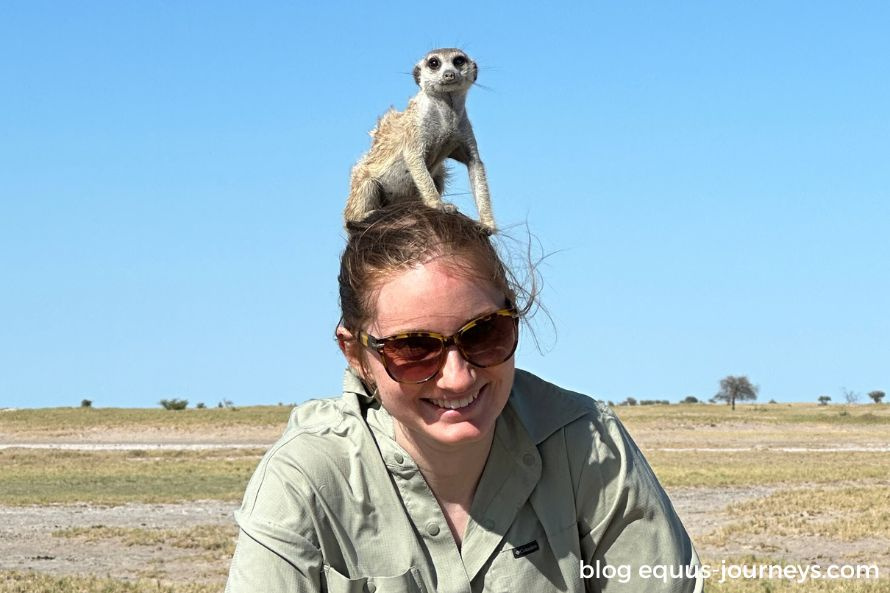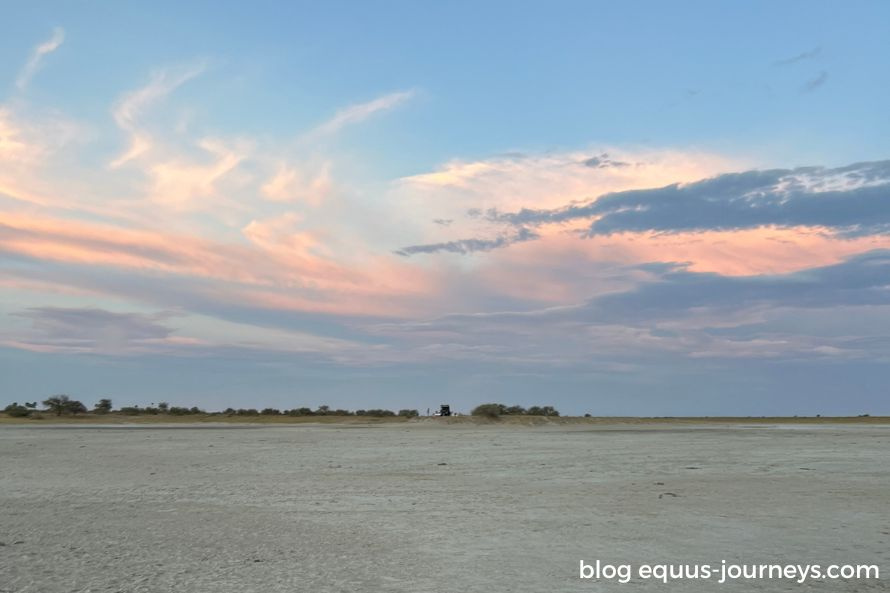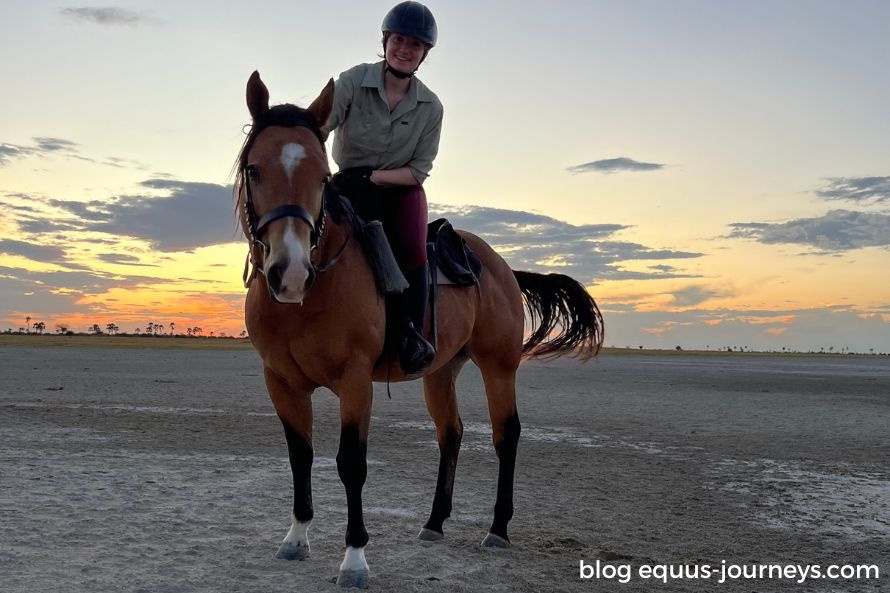
Delta Diary Part 4 - The Kalahari Ride
“Give him a moment…
and sit very still!” David says, as I freeze in a squat position. My knees, already
protesting after ten consecutive days in the saddle, scream in agony, but I
soldier on. The things we do for the chance to have a meerkat perch on our shoulder! My real-life Timon is
a little restless today. The wind has him on edge, making him extra skittish.
David and I remain motionless, patiently waiting. Finally, he inches closer.
Does this make me a Disney princess? Or am I more of a Pumbaa?!

Rewind a few days.... I've just arrived in the Kalahari. This is the last stop on my grand tour of Botswana before it all comes to an end. After a long journey and many intense days in the saddle, I’m starting to feel the wear. A rest day, spent transferring from Cha Cha Metsi camp in the Okavango Delta, to Camp Kalahari in the Makgadikgadi Pan, is a welcome reprieve.
The Makgadikgadi is a
vast salt pan in the Kalahari Desert, the last remnant of Lake Makgadikgadi—a
massive body of water once the size of Switzerland. The pans’ stark, endless
white contrasts sharply with the lush greenery of the Okavango Delta. During the
wet season (November to March), the pan becomes a stage for the zebra and
wildebeest migration, along with the predators that follow them. The area where
we ride is home to several remarkable camps: Camp Kalahari, my base, the
minimalist and serene San Camp, and the opulently luxurious Jack’s Camp.
I fall in love with
Camp Kalahari at first sight. Small and intimate, it’s beautifully designed and
comfortable. We arrive just in time for a delicious high tea, followed by our
first afternoon ride. It’s a relaxed affair, giving us a chance to absorb the
sheer scale of the pan as the sun sinks below the horizon. I never tire of
African sunsets—they’re pure magic.

While the wildlife
here isn’t as plentiful as in the Delta, I’m surprised by how much I see during
my stay. Zebra, elephants, and antelope roam the area, and I tick off a few new
species on my list: new birds, springbok, a pair of bat-eared foxes, and even a
striking African wildcat. And, of course, the famous meerkats!
David has a dozen
horses based here in the Kalahari, and the pans offer fantastic riding terrain.
Flat and open, they’re perfect for exhilarating canters. While the scenery
might not be the most diverse, it’s never dull. Every day feels unique, with
surprises around every corner—a hidden bush breakfast, a family of meerkats, or
an unforgettable encounter with the local fauna.

The meerkats are
undoubtedly a highlight of my visit. Semi-habituated—not tame, but not entirely
wild—they’re fascinating. Sometimes, they’ll completely ignore you. Other
times, if the mood strikes, they might decide you’re the perfect human perch.
One cheeky fellow quickly made himself at home on my knee, before climbing onto
my shoulder, and finally settling on the top of my head. David was thrilled;
the marketing photos were going to be gold. Having my nose tickled by a
meerkat’s tail wasn’t on my Botswana bingo card, but then again, Africa is
always full of surprises!
Another memorable
activity at Camp Kalahari is a walk with the local San bushmen. Joyful and
welcoming, they guided us through the bush after tea, teaching us how to dig
for roots and scorpions, and sharing insights into their traditional clothing
and tools. Was it staged for curious European tourists? Perhaps. But it was a
fascinating and enjoyable experience nonetheless.
Before arriving, I
wasn’t sure what to expect. The Delta gets so much of the spotlight that the
Makgadikgadi often feels overshadowed. But the pans have their own unique
beauty—wildlife you won’t find in the Delta, a different kind of serene luxury,
and stars that shine just as brilliantly in a moonless sky.
